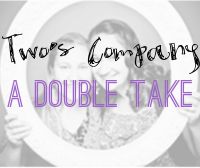"Dignity, and even holiness too, sometimes, are more questions of coat and waistcoat than some people imagine." -Charles Dickens
 |
| Okay...so it's a random picture...but isn't this a gorgeous bird?! |
Description is so important. Description done well. There is description in excess. There is tacky description. There is description that is too heavy and golden and dripping so that it feels rather like a handful of honey getting everything sticky and running out through your fingers while you try to taste it. But then, there is description that is spot-on and leaves you knowing just what the author intended you to know.
I used to be a bare-bones writer in the Description Department, meaning that I counted on dialog and character strength and that sort of thing to beautify my plot. But through my last few projects I've grown to love describing things. As with any writer, my world and my characters are so very alive in my mind that there is a danger of forgetting the world at large doesn't understand. We are given the privilege of showing our readers the just-so parts of literature. Not only the plot, not only the characters, but what they look like. What the scenes look like. All that.
Jenny is a stellar example of How To Do Things. Somehow (and it seems without much groping about) she chooses just the right words so that you are transported not to her world but in it, as I'm sure you know if you've read anything she writes.
But how do you know it's good? How can you tell splendid description when you know it? I'll tell you.
Good description doesn't tire you to read. Good description is so enveloping and intricate that you hardly notice you are reading. The words have become a portal There and you quite forget Here in that moment. I know you have all emerged from reading a book only to be quite surprised it is summer outside--you'd been trapped in a snow-storm. Or else you raise your eyes from your book with a sudden realization of its being dusk and you've not stopped even to turn on a light.
That's good description. Description done right will transfix you and carry you into the book. It doesn't serve as a piece apart from the story. There should be no: "I'm describing it to you and then we'll have a conversation and then a bit of action and then the next scene I'll describe more to you!" No. Description ought to be so mixed up with the plot that you have those gorgeous chunks, but you also have unexpected bits of brilliancy lying about the meat of the chapter.
Paraprosdokian is a good word to describe what I mean, in a way. It means: "Figure of speech in which the latter part of a sentence or phrase is surprising or unexpected; frequently used in a humorous situation."
Though of course it doesn't have to be humorous. It's the knack of tucking gems in amongst the hum-drum so that you are never looking for them when they appear. :)
An example of a paraprosdokian is this: "To steal ideas from one person is plagiarism. To steal from many is research."
I feel like I'm not making much sense, but I trust you to get the idea. I don't mean your description must be a paraprosdokian, only that it adds much it has that sort of unexpected appeal. :) But now I've diddled my mind with using such fifty-dollar words and I will leave you now!















1 comment:
Great advice, Rachel! It really made me stop and think. I'm not very good at description as it is but perhaps with your advice I may be able to become good at it. Thanks again for your great advice.
Post a Comment